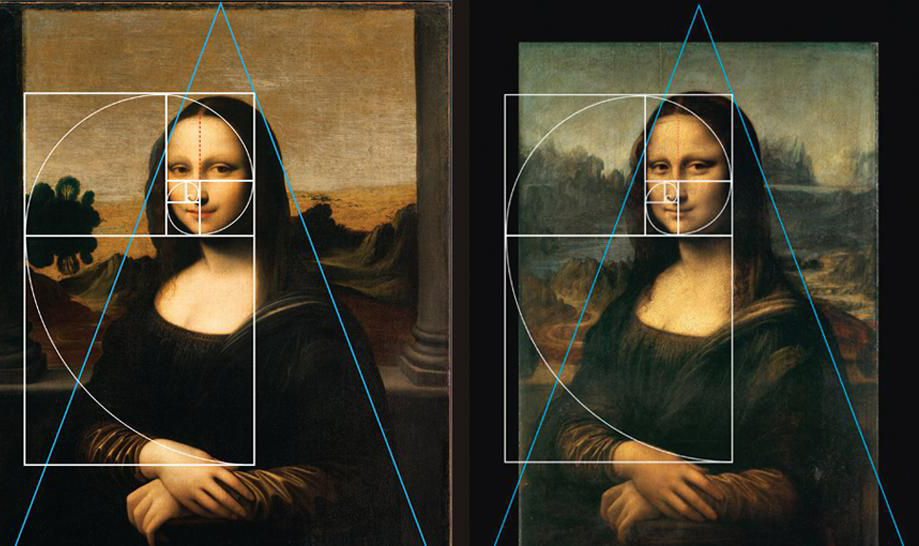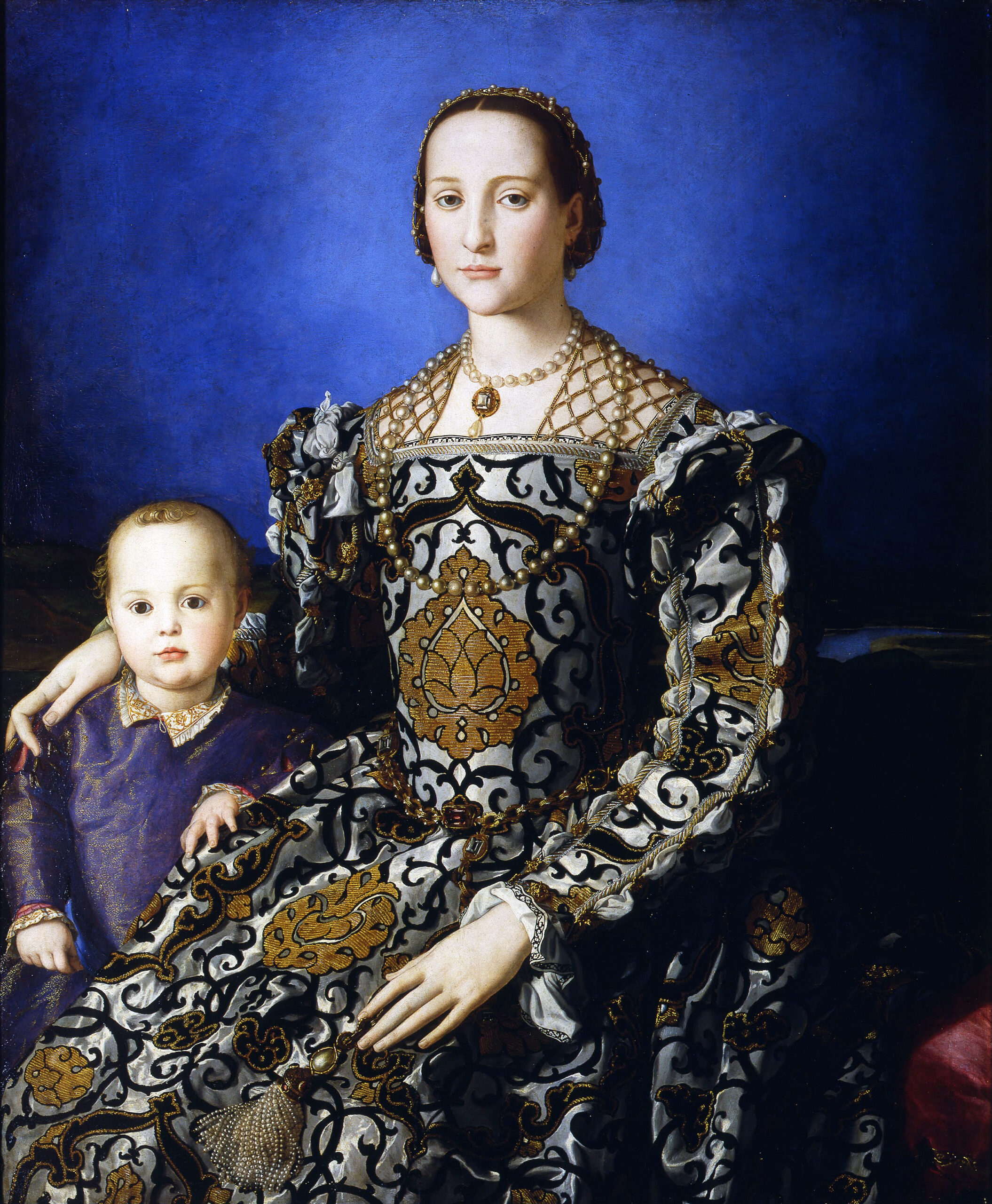Soon after Leonardo returned to Florence and rejoined the Guild of Saint Luke, he took on another commission, a portrait of Lisa del Giocondo, the wife of a wealthy Florentine silk merchant. Today we call the painting the Mona Lisa.
The work that we know is a small portrait, approximately 30 inches high by 21 inches wide and is the most famous painting in the world. Countless writers have commented on the elusive smile on the woman’s face; its mysterious quality is perhaps due to the subtly shadowed corners of the mouth and eyes. It makes it impossible to determine the exact nature of the smile. The shadowy quality for which the work is renowned came to be called “sfumato” or Leonardo’s smoke.
Although many are captivated by the face of the Mona Lisa, particular attention should be paid to the dramatic landscape background, in which the world seems to be in a state of flux; the subdued coloring and the extremely smooth nature of the painting technique. Leonardo laid down the oils much like tempura and blended the surface so that the brushstrokes are indistinguishable. The state of preservation and the fact that there is no sign of repair or overpainting is rare in a panel painting of its age.
Art experts long believed that the painting dated from Leonardo’s late period, given its heavy sfumato treatment. However, a handwritten note by the master revealed that he began the work in October, 1503, more than a decade before his “late period.”
Leonardo’s 16th century biographer Giorgio Vasari, claimed that Leonardo worked on it for four years and then left it unfinished. This seems inconsistent with what we see in the portrait. The Mona Lisa that is in the Louvre is the most complete, detailed and polished work of art by Leonardo. Additionally, in 1517, Leonardo told a visitor that the portrait was made for Giuliano de’ Medici, brother of Pope Leo X, under whose patronage Leonardo lived in Rome between 1513 and 1516.
With so much inconsistency and with the passing of five centuries, what conclusion could possibly be drawn? The simplest explanation is that the sources do not agree on the time frame or subject because there are two different paintings. In other words, there are two versions of the Mona Lisa, both painted by Leonardo. By no means would this be a radical theory. Leonardo painted two versions of The Virgin of the Rocks and also painted two versions of The Virgin of the Yarnwinder. In many of his works, Leonardo allowed collaborators to fill in the lesser parts of his paintings, such as the background and the clothing, while he concentrated on the most important elements – the faces and hands. In this process, it allowed Leonardo’s assistants to learn the master’s technique and given how slowly Leonardo progressed on paintings, the use of pupils to work on lesser parts of the paintings made eminent sense.
If Leonardo painted two Mona Lisa’s, what happened to the other one? It is a portrait known as the Isleworth Mona Lisa, which was long believed to be a copy. Close inspection reveals that unlike all other 16th century versions of the Mona Lisa, the Isleworth is not a copy at all. In key respects, including its size, composition, landscape and the fact that it is painted on canvas rather than wood, make it strikingly different from the Mona Lisa that everyone is familiar with. What’s more, it depicts Lisa del Giocondo as a beautiful young woman. This also makes sense. In 1503, Lisa was just 24 years old, quite unlike the matronly figure depicted in the Mona Lisa. Another critical feature is that the Isleworth is unfinished, just as Vasari wrote. Most of the background never progressed beyond the gesso – the under paint. Another telling fact is that Raphael made a sketch of the painting in 1505, after seeing the painting in progress. It showed Lisa flanked by two columns. Similar columns are visible in the Isleworth picture, but only their bases appear in the painting in the Louvre, which has been examined and according to experts, has never been trimmed.
Why has no one else looked more closely at the Isleworth version? For much of the past 500 years it has been shielded from public view. It was privately owned and when it was rediscovered in 1913, hanging in a stately home in England, its subsequent sale resulted in the painting being locked away in a vault in Switzerland. The painting was purchased by American collector Henry Pulitzer in 1960, who wrote a book about the painting, but after his death in 1979, the painting was purchased by a consortium that again, locked it away in a vault. It only re-emerged three decades later. For four years the painting was scrutinized by the Mona Lisa Foundation, a Swiss non-profit organization. In 2012, their results were announced. After studies taking place over a 35-year period, scientific evidence showed a 99% probability that the face and hands in the portrait were painted by Leonardo. The pigments confirm the work’s date to the start of the 16th century, analysis of the brushwork reveals that a left-handed artist executed several parts of the painting. Spectral analysis also revealed clear underdrawings in the Isleworth version that usually appear only in original works and not in copies. Furthermore, when comparing the two versions of the most recognized face in the world, researchers found that they were both framed identically by the Golden Ratio and conformed to the intricate geometric codes on which Leonardo based almost all his portraits, including his Vitruvian Man and “The Virgin of the Rocks.”
If the Isleworth Mona Lisa is indeed the earlier version, then who is the older woman in the Louvre? Is she a later version of Lisa del Giocondo, painted in middle age? It is remarkably unlikely that Giuliano de’ Medici would want a portrait of the wife of a silk merchant. It is more likely that the Mona Lisa that we know was no longer the likeness of a particular person. While Leonardo used the same preparatory drawing from the earlier version, he was no longer interested in painting an actual portrait. Instead, he wanted to create an idealized image of motherhood and the mysterious forces of creation, as evidenced by the primordial landscape in the background. So it may be that Leonardo chose to paint Lisa again to capture the eternal grace and mystery of womanhood.
Whether there are two versions by Leonardo of the Mona Lisa makes for a fascinating discussion and a mystery that may never be solved, but this should not be surprising, given the enigmatic nature of the artist, whose life and mind existed on a different plain than the rest of the world.
In Part V of this series, we will examine Leonardo’s later years.





